I am bemused to see Peter Dutton setting a confrontational course against China. He is charting a no-win situation. Whether the Chinese mainland invades Taiwan or not is an exercise in the pointless for our foreign policy. If we were to send any troops, which seems to be our knee-jerk reflex whenever the Americans call their allies to arms, you would just wonder why.
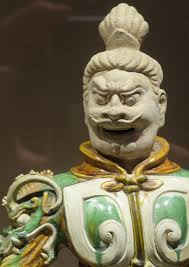
Are the Chinese prepared to destroy a sophisticated industrial machine and repository of a large part of Chinese heritage in order to prove a point? Maybe they will, because if you take the long view, the Chinese may believe it to be a cleansing tonic. I always wondered whether they would be prepared to destroy all the priceless artefacts that were taken from China after the defeat of the Nationalists in 1949. My Chinese expert shrugged – he said he doubted whether they would care. The main game is to suppress a democratic Taiwan.
Chinese expansionism not for first time was into Tibet. Its system of repressive feudal theocracy which the Chinese overwhelmed has been sugar-coated by the long-lived effervescent Dalai Lama, who however has moved down from a Nobel prize winner eminence to a lamasery relic that nobody influential cares about. The price of living too long – “if you aspire to holiness, die young” is an aphorism which the Nazarene Christ showed.
It was easy for the Chinese to supplant Portuguese rule in Macau, which was coming to an end in the Far East as Macau had become a decadent gambling joint, sheltering criminals. Then there has been Hong Kong. I suspect the Chinese had never forgotten their humiliation by the British and the French in sacking the Imperial Palace.
The Chinese are there for the long haul. They have long memories. So they abided all the British pageantry, and then when they were ready, they tossed the 50 year agreement into the diplomatic rubbish bin, and took over Hong Kong lock, stock and barrel with the customary charmless brutality.
But I remember the fuss in the 1950s over Quemoy (or more commonly called Kinman now) and the Matsu Islands, which are within spitting distance of the Chinese mainland. Now 70 years later they still remain in the hands of Taiwan, despite in the intervening period the Chinese having taken over a number of disputed islands in the South China Sea and extended its commonweal to include both the Paracel and the Spratley islands between China and the Philippines. Having said this, after the savage confrontation in the 1950s, the intervening cordial relations between these islands and the Mainland have soured with the advent of Xi Jinping. For instance, the ferry service between Quemoy and the mainland no longer runs.
The Chinese have constructed missile arsenals, aircraft hangars, radar systems and other military facilities in the Spratley Islands on Mischief Reef, Subi Reef and Fiery Cross. It remains to be seen if China will pursue the construction of military infrastructure on other coral atolls in the South China Sea.
America has no claims itself but has deployed navy ships and aircraft for decades to patrol and promote free navigation in international waterway and airspace. Other countries – the Philippines, Vietnam, Malaysia, Taiwan and Brunei – claim all or part of the sea, through which approximately $5 trillion worth of goods are shipped every year.
China routinely objects.
Hainan is almost the same size as Taiwan, but is a specific Chinese Economic Zone famed for its coconuts and tourism. It lies about 1,000 kilometres to the south of Taiwan, hugging the coast. There is no question of it not being part of China.
But this irritant Taiwan! Thousands of years before ethnic Chinese settled on Taiwan, aboriginal tribes were hunting and farming the land. They probably came from the Philippines and today constitute two per cent of the population. China held the Island until the Japanese acquired it as a result of the First Sino-Japanese War. From 1895 it was a very model of a community where the native Chinese and Japanese lived and worked together harmoniously.
Then, after the fall of Japan in 1945, the status of Taiwan became ambiguous, paralleling the ambiguity of the continued recognition of Chiang Kai-shek’s Republic of China (R.O.C.) as the True China, despite the fact that he had been roundly defeated in 1948/49. He and the remnants of his army, together with a considerable amount of looted treasure, fled to Taiwan. In fact, he was just leading yet another invading force of Taiwan. He then set up a virtual dictatorship which, at the time being the Cold War, the Americans supported. Called the White Terror period, even though Chiang Kai-shek died in 1975, the military rule extended to 1987.
I peripherally experienced this conflict in 1956 when I was on the crew manifest of the S.S. Taiping; well, for a time I occupied the assistant wireless officer’s cabin at least. I remember it well, the ship being “buzzed” by American Starfighters on the South China Sea, with the Matsu islands providing a background on the horizon. Let me say, they came in twice at funnel height – quite a performance.
Over the years, Mainland China took the permanent seat on the United Nations and reduced the number of countries maintaining diplomatic relations to 14 plus the Vatican State. Most of countries are in Central and South America plus the Caribbean; also a few of the Pacific microstates and in Africa, Eswatini.
Now all that remains is the independence of Taiwan – an enclave within the Chinese diaspora. If Taiwan had been maintained strictly as a Fortress for the R.O.C, with its own Potala Palace to remind the world of its oligarchic past – in one case theocracy, in the other a military junta – then Taiwan would be solely dependent on being propped up by the Americans as an anachronism. Taiwan is far from that – being a modern democratic industrialised country – anathema to China and yet lodged in an artificial enclave constructed by China.
The Chinese nightmare is for Taiwan to declare independence, and call the Chinese bluff. That is an important card in its hand. The only matter of importance is that war does not extend to Australia, with the Chinese community taking up cudgels for one or other of the sides.
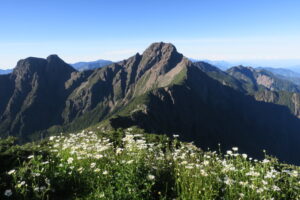
The Chinese must look at the terrain of Taiwan and shudder, but as the Chinese Ambassador to Australia, in his speech implied, they have 1.4 billion people to lose (assuming that his assumption is that all 1.4 billion Chinese think as he does about Master Xi Jinping and his infallibility) and the Taiwanese only 22 million in any conflict, which could yet just go on year after year; and in the meantime the planet burns. Nature does not take sides. We all die.
John Knight
I started off with a mention of Dutton, elected as Leader of the Opposition, who has continued to behave as if he was still a Queensland copper. Yet he had been elected unopposed as Leader of the Liberal Party.
Whereas when Billy Snedden was elected by a margin of one vote to the position of the Leader of the Opposition after five ballots in 1972, it indicated that there was a solid group who voted against him. Among them, it was generally believed that he was a nice enough fellow but a policy boofhead.
After all he had been the Treasurer in the failed McMahon government, and McMahon had become an embarrassment propped up by the NSW Division of the Liberal Party. A familiar theme?
However, if you looked overall at the standard of Snedden’s office, the concept of “boofhead” did not quite gel, as he was considered to have recruited some smart individuals. At one time just after his first group of advisers had assembled, an office straw poll was held of those who voted for the McMahon Government in 1972 election, and the answer was no-one.
One of those recruited was John Knight, who was working in the Department of Foreign Affairs before Snedden appointed him as his senior Private Secretary. When John Knight had been originally recruited to the Department of Foreign Affairs there had been 400 applicants for 15 jobs. From the start he was potentially a high calibre diplomat and already had had one posting as a third secretary in the High Commission in New Delhi.
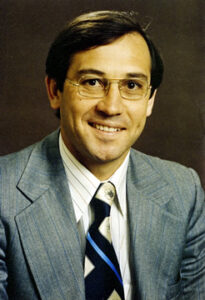
As he showed many times, his certain adroitness, his ability to grasp and magnify the positive elements of the conversation showed he had learnt well. Snedden asked him to see if he could organise a trip to China for Snedden. Since Whitlam was going later that year, it provided the opportunity to develop a bipartisan approach to China.
The initial spokesman for Foreign Affairs was Nigel Bowen, whose head was now in another space after his defeat as Leader given the exhausting exhaustive ballot. In 1973, Bowen retired from politics and was appointed as Chief Judge in Equity in the Supreme Court of New South Wales. He was appointed first Chief Judge (later Chief Justice) of the Federal Court of Australia in 1976 and held this until his retirement in 1990.
This in effect meant John Knight had very much free rein, which he exerted with discretion, but secured an invitation for Snedden to visit Beijing. John got on very well with Andrew Peacock, their progressive views matched. By the time Snedden went to China, Peacock had replaced the outgoing Bowen as Foreign Affairs spokesman.
There have been mixed reports about his visit, because it was not the play sheet that Whitlam wanted, given that he had already appointed his former adviser, Stephen Fitzgerald as the Australian Ambassador to China. Snedden visited, and while he did not meet Mao Tse-Tung, whom Whitlam did, his approach was in marked contrast from the previous Coalition government. When we were there, Fitzgerald could not have been more helpful, and in fact let us in on some interesting snippets he overheard pass between our Chinese hosts. After all, it was not the most stable time in China with the Gang of Four rampant.
However, a report of the visit is another story. As I wrote earlier, Snedden was convinced that the Liberal Party should recognise the P.R.C. governing China rather than the R.O.C. holed up in Taiwan, as Whitlam had formally done on behalf of Australia at the end of 1972 with ambassadors being exchanged between Australia and China in 1973.
John Knight provided the advice in relation to China. Watching Dutton stridently asserting an aggressive policy makes one wonder where he is getting his advice. Despite being still under thirty, John Knight provided shrewd progressive advice, as he did in facilitating Snedden’s visit to China. I still have a diary of that visit.
By August 1973, Snedden had been to China, met senior government figures and returned. It is agreeable to have a friendly ally, as I found out when the Taiwan Government sponsored my visit some years ago when I was involved with an international society concerned with the quality of health care. But in the end, the Taiwan trip was a junket. But does Dutton only want to be left with a bowl of whey as his China policy as I write this blog in August 2022?
Visiting China made me feel that I was a participant in a major change and, as a result of Snedden’s visit, the Opposition reversed its position and reconciled itself to a new order – a new order which had been precipitated in 1971 by the Government of China assuming its rightful place in the United Nations.
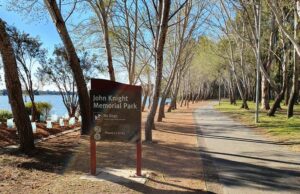
John Knight later went on to become the first Liberal Party Senator for the ACT in 1975; he was re-elected in 1977 but died of a heart attack while water skiing in 1981 at the age of 37. His memorial is a park in Belconnen, a 12 hectare area located on the eastern foreshores of Lake Ginninderra. He died way too young.
Malevich – a Ukrainian pathfinder
The effect of Malevich’s exposure to the new art was electrifying. In the three years between 1909 and1912 he went from being an unremarkable provincial painter to producing some of the major works of art of this century. In that time he assimilated the modern corpus, mastering it entirely, and he began to take his own direction in full consciousness of his powers. – Charlotte Douglas
Last week I related our pilgrimage to the Magritte Centennial Exhibition.
About eight years ago, there was an exhibition of Malevich’s work at the Tate Gallery in London. I well remember the trip down the Thames to the Tate Modern.
I came away with a memento.
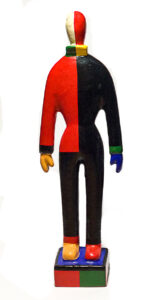 I look at this figurine – a wooden model drawn from the quartet of multi-coloured figures in the Malevich painting entitled The Athletes, probably painted in 1931 and hanging in The Russian Museum.
I look at this figurine – a wooden model drawn from the quartet of multi-coloured figures in the Malevich painting entitled The Athletes, probably painted in 1931 and hanging in The Russian Museum.
The rendering of the human form as faceless, multi-coloured athletes was supposed to evoke how Russian saints are depicted in iconography. In particular, the shape and placement of the feet along a solid black line imitates the stance in the icons.
Kazimir Malevich was born in 1879 and died at the age of 56 in 1935. He was Ukrainian born in Kiev of ethnic Polish parents. He has become one of the most influential abstract artists whose work confronts the concrete concept of objectivity – the tools of the natural world.
Malevich went through an early phase of experimentation, often using peasants as subject matter, the yeoman stock of his Mother country. Then he entered a phase of cubism painting, before his signature Supremacist phase. Here he reduced his depiction of the human condition to geometric forms, one being a black square on a white background which seems to have mesmerised a whole generation of art critics. This time coincided with the Russian Revolution.
He is remembered through his painting conceptualising Suprematism “to access the supremacy of pure feeling” as he put it. His Supremacist painting is what makes Malevich standout. Essentially an exercise in decomposition he reduces the natural world into multicoloured images arranged in weightless space. Once you thus attempt to explain Suprematicism, you invoke visions of space where images are precisely organised into geometric forms; in many case it seems more reductionist than entering so supreme form – personally I do not understand why these paintings are associated with the Fourth dimension, which I always think about as the image of a man, holding an image of himself, infinitely repeated (see old Weeties packets).
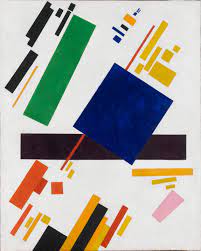
Yet trying to intellectualise Supremacism does not detract from the brilliance of his painted work, without having to get into his mind and all its entanglements for an explanation.
Following the death of Lenin with the rise of Stalin, Malevich modified his paintings to show identifiable figures, while maintaining his basic supremacist analysis. The Athletes is part of this period. After his death, much of his work was destroyed by Stalin’s regime, but enough has survived, notably in the Stedelijk Museum in Amsterdam. Perversely much of Malevich works are also held now in Russia; enough said.
Mal-a-Prop
When will it end? Below is an opinion piece by Alyssa Rosenberg in The Washington Post. Alyssa Rosenberg writes about the intersection of culture and politics for The Post’s Opinions section. Rosenberg holds an Arts degree in humanities from Yale University. Her work has also appeared in The New York Times and many other publications.
This is one of an increasing number of articles where Trump is no longer perceived as a politician, but as the leader of a quasi-religious cult. Whether Trump is inciting a Jonestown scenario or not, you can be sure that he would not be present if Trumpland faced a Jonestown type Apocalypse.
Last week, a man whom authorities have identified as Ricky Shiffer was shot and killed in a stand-off with police officers after he allegedly tried to break into a FBI office in Cincinnati. Reports suggest that he may have been motivated by a strong devotion to former president Donald Trump and by anger at the FBI’s search of Trump’s Mar-a-Lago resort.
On Thursday evening, The Post reported that according to sources, the search at Mar-a-Lago was aimed in part at recovering “classified documents relating to nuclear weapons.” Trump’s response? A post on Truth Social, the platform he founded, declaring, “Nuclear weapons issue is a Hoax,” and a false suggestion that “Barack Hussein Obama” had done something similar.
But whatever we may learn about Shiffer’s motivations and the results of the FBI search, one thing is clear: The number of people who have died seemingly in service of an idol as unworthy as Donald Trump is tragic.
It’s one thing for Trump to relieve his followers of their money for dubious causes. The former president has raked in millions of dollars ostensibly dedicated to political work, when in reality what money has been spent has gone to Trump’s personal expenses.
But it’s different when people start dying.
Four of Trump’s supporters died at the Jan. 6, 2021, riot at the Capitol: Ashli Babbit, who was shot while trying to climb through a broken window; Kevin Greeson, who suffered a fatal heart attack; Benjamin Philips, who succumbed to a stroke; and Rosanne Boyland, whose official cause of death was “acute amphetamine intoxication,” but who was caught up in a crush of bodies on the Capitol grounds. Christopher Stanton Georgia died by suicide later that month after he was arrested on unlawful entry charges stemming from Jan. 6; he pleaded not guilty before his death.
Now comes the death of Shiffer, who was also apparently at the Capitol on Jan. 6.
Some might be tempted to create distance from these tragedies through mockery, or by treating Trump’s devotees as oddities.
That impulse — to disparage or dismiss the weird and extreme — seems to undergird a 2020 New York Times profile of a widowed farmer in India who adopted Trump as a personal deity, then collapsed and died after taking to his room and refusing to eat when Trump tested positive for covid-19. It’s also the sentiment behind so much snide social-media chatter. For instance: “some dude woke up today and decided to commit suicide by cop because the former host of celebrity apprentice wasn’t allowed to keep the top secret documents he stole from the White House.”
It’s easy to scoff. But this sort of commentary ignores the sadness running through so many of these stories.
Ashli Babbitt was looking for meaning because her military career had stalled out, and her pool company was failing. The QAnon conspiracy theory — which presents Trump as a bulwark against a secret cabal of powerful paedophiles — gave Rosanne Boyland purpose and a framework for understanding the world as she struggled with addiction.
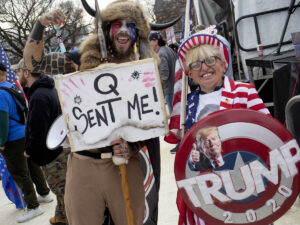
The absurdity and maliciousness (sic) of the cause for which these people have died only compounds the horror of their deaths. How is it that no one, no institution, could offer something more substantive than the manifest hollowness of Trump and Trumpism?
An essential part of Trump’s malign magic is its impermeability. Suggest that his followers deserve better — whether that is an actual infrastructure package or a leader who appeals to their best qualities rather than their basest — and you’re accused of exhibiting the very contempt that made Trump attractive in the first place. Suggest Trump is scamming his followers, and you’re a tool of the deep state. According to Trump and his many enablers, there is no evidence that isn’t planted or manufactured, no moral act that is disqualifying, no act for which Trump himself can be held responsible.
Even the people who seek to martyr themselves in Trump’s defence can be redefined and reinterpreted through this corrupt logic: On social media, Trump fans aren’t celebrating Shiffer as a Trumpist patriot. They’re dismissing him as a false flag planted to paint the FBI in a flattering light.
Those of us who live outside the boundaries of this mad realm may be tempted to count ourselves lucky. Still, we should be concerned for the residents of Trumpland for their own safety. And if that’s not enough, we should care because the people who die for Donald Trump may someday take others with them.
Mouse Whisper
As I sat under the breakfast table, I heard him ask, “what had Brendan Murphy as Head of the Department of Health known about the Morrisonian hi-jinks. It would appear inconceivable that he did not know about the arrangements, if his Minister Hunt knew. He should be asked as to what he knew, because this serious breach of conventions at the very least affects ministerial responsibility and that of the Head of Department. I shudder to think what would have happened if Morrison had been re-elected, given his recent statements. Would he have sought the Governor-General to also appoint God to the Ministry?”
He also wondered about the mental acuity of the Governor-General. “This guy after all headed the Australian Defence Forces. Did he show the same level of judgement when he was boss there as he showed with this secret collaboration?”
Well, I think that is what he said, reporting from my mouse pad.

